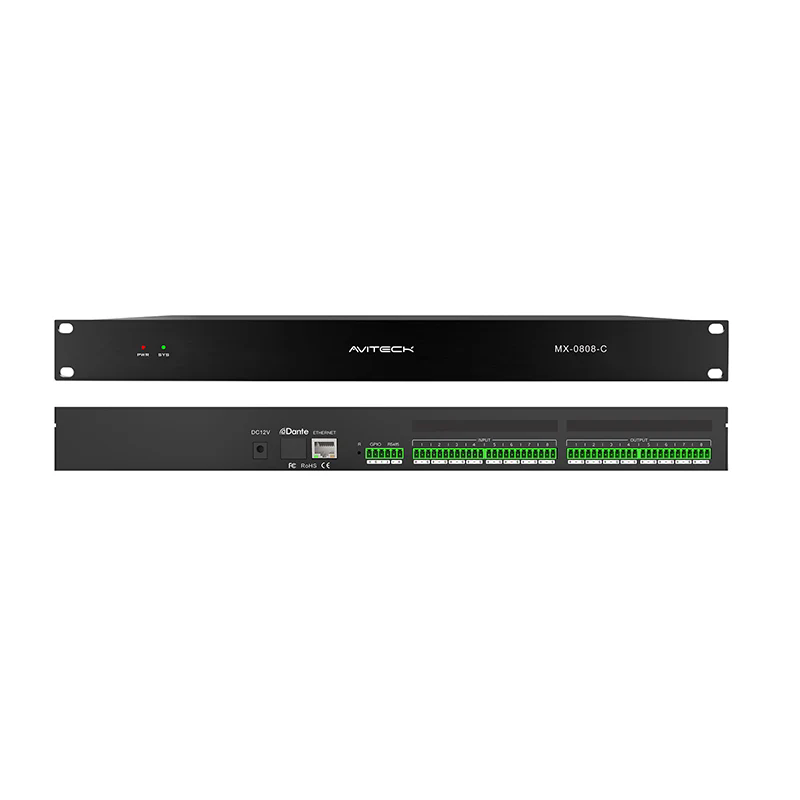Exploring the Power of Digital Audio Processors: A Game-Changer in Sound Engineering
2024-11-01
In the world of audio technology, few innovations have had as profound an impact as digital audio processors (DAPs). These devices have transformed the way we record, mix, and enjoy sound, shaping everything from home audio systems to professional studio setups. This blog delves into what makes DAPs so revolutionary, their various applications, and how they contribute to creating the crystal-clear sound quality we experience today.
What is a Digital Audio Processor?
A digital audio processor (DAP) is an electronic device that processes digital audio signals to modify, enhance, or mix them in real time. These processors take audio input, perform calculations to adjust its frequency, volume, and other characteristics, and then output an optimized version. The DAP can work on various audio parameters, including equalization, dynamic range, reverb, and delay, enabling engineers and users to create high-quality sound tailored to specific needs.
Key Components of a Digital Audio Processor
Digital audio processors rely on several key components:
1. Digital Signal Processor (DSP): This is the "brain" of the DAP, performing calculations on the audio signals.
2. Memory: Stores audio data and DSP instructions, allowing for continuous, real-time processing.
3. Analog-to-Digital Converters (ADC) and Digital-to-Analog Converters (DAC): Convert analog signals to digital form for processing and vice versa for output.
4. User Interface: Many DAPs come with interfaces, either hardware-based or software, for easy control over various audio parameters.
Benefits of Using Digital Audio Processors
Digital audio processors have multiple advantages that have led to their widespread use in professional and personal audio settings:
1. Enhanced Audio Quality: DAPs allow for precise manipulation of sound properties, resulting in clearer, more nuanced audio output.
2. Versatility: With DAPs, audio engineers can mix and modify sounds to suit diverse applications, from live concerts to studio recordings.
3. Automation and Real-Time Adjustments: Digital processors can respond to changes in real time, automatically adjusting sound levels based on preset parameters.
4. Cost Efficiency: While high-end DAPs can be pricey, their functionality often consolidates what used to require multiple pieces of analog equipment, making it more economical in the long run.
Applications of Digital Audio Processors
1. Professional Audio Production: In studios, DAPs are crucial for mixing and mastering tracks, enabling engineers to tweak sound to achieve the best possible quality.
2. Broadcasting: Digital audio processors ensure consistent sound levels and clarity across live broadcasts.
3. Home Audio Systems: DAPs are used in many high-end home theater systems to optimize sound, making movie and music experiences more immersive.
4. Concerts and Live Events: DAPs are indispensable for managing live sound, adjusting parameters on the fly to ensure balanced audio throughout a venue.
5. Public Address Systems: In arenas, churches, or conference halls, DAPs manage and optimize sound to ensure clarity and reach, regardless of crowd size.
How Digital Audio Processors Improve Everyday Audio Experiences
DAPs have also impacted personal audio. Noise-canceling headphones, for instance, use DAP technology to monitor ambient sounds and counteract them with inverse frequencies, providing a peaceful listening experience. Additionally, smartphones use DAPs to enhance voice clarity in calls and adjust audio playback for media files, all while managing battery efficiency.
The Future of Digital Audio Processing
As technology advances, digital audio processors are expected to become even more sophisticated. Emerging fields such as artificial intelligence and machine learning are being integrated into DAPs, allowing for smarter audio processing that can adapt to users' environments and preferences. Moreover, the rise of virtual and augmented reality requires high-quality, immersive audio processing that DAPs are uniquely suited to provide.
Conclusion
Digital audio processors have redefined what is possible in sound technology. They enable high-quality audio output for a variety of applications, from professional studios to personal audio devices, enhancing the listening experience for all. As DAP technology continues to evolve, we can look forward to even more groundbreaking advancements in how we create, share, and enjoy sound.
Whether you’re a sound engineer, an audiophile, or simply someone who loves quality audio, digital audio processors are making it easier than ever to achieve exceptional sound. With more innovations on the horizon, the world of audio processing holds an exciting future for everyone involved.



